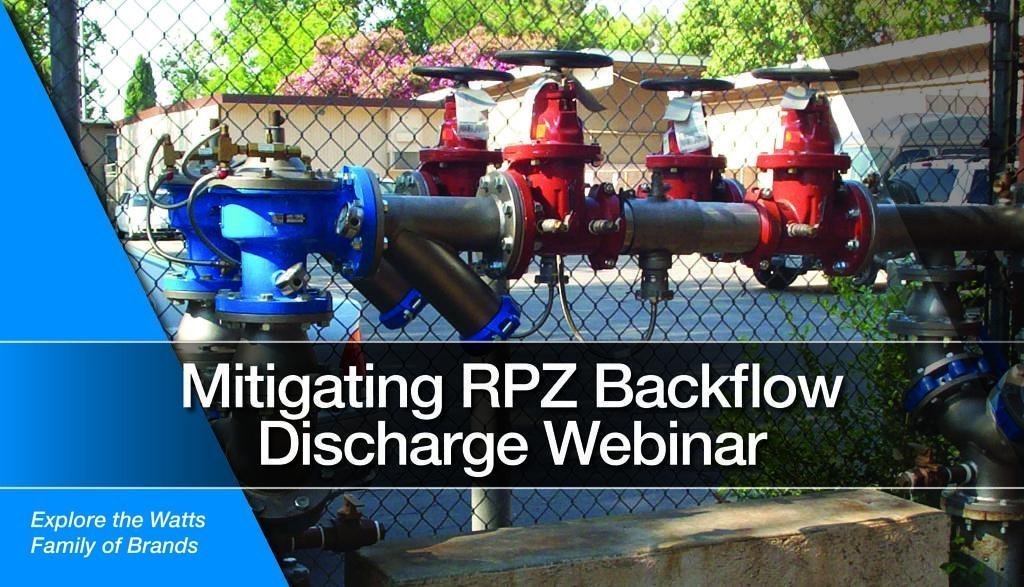As you read in our newest article, “Protecting our Water Supply and Infrastructure with Backflow Prevention & Flood Mitigation Technologies“, Reduced Pressure Zone (RPZ) backflow preventers are an integral part of any rigorous cross-connection control program. While they offer the highest protection of any backflow assembly, the relief valve discharge can cause issues if you do not fully understand how RPZ backflow preventers work.
A vital part of the RPZ is the relief valve, which is designed to open during certain backflow conditions to allow potentially contaminated water to flow out and down the drain, rather than into the potable water system. However, other causes, such as debris fouling the first check, will also cause the relief valve to discharge. Discharge rates vary based on the failure mode, model, size, and supply pressure, but can easily reach into the hundreds of gallons per minute.
While most mechanical rooms have integral drains, they are often undersized or clogged, and are unable to adequately remove water in the case of a catastrophic RPZ relief valve discharge. Because these valves are also often in basements, closets, or other less-frequented parts of a building, large and potentially costly discharge events are frequently not noticed until it is too late.
 Complete the form below to access the webinar recording, where our Backflow Product Specialist, Cameron Rapoport, will explain how RPZ preventers work, help you understand basic root cause analysis of a discharging one, and how to determine worst case discharge.
Complete the form below to access the webinar recording, where our Backflow Product Specialist, Cameron Rapoport, will explain how RPZ preventers work, help you understand basic root cause analysis of a discharging one, and how to determine worst case discharge.





Comments